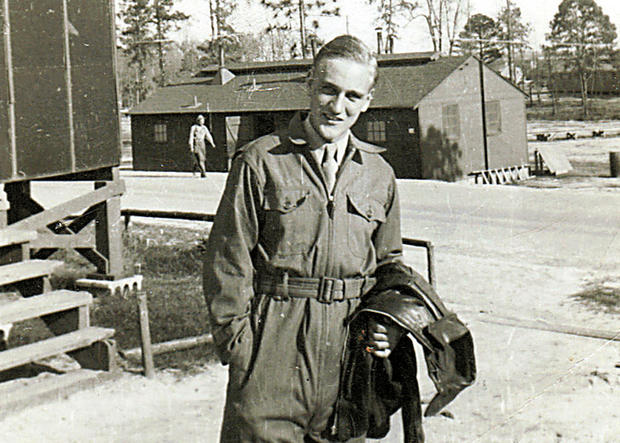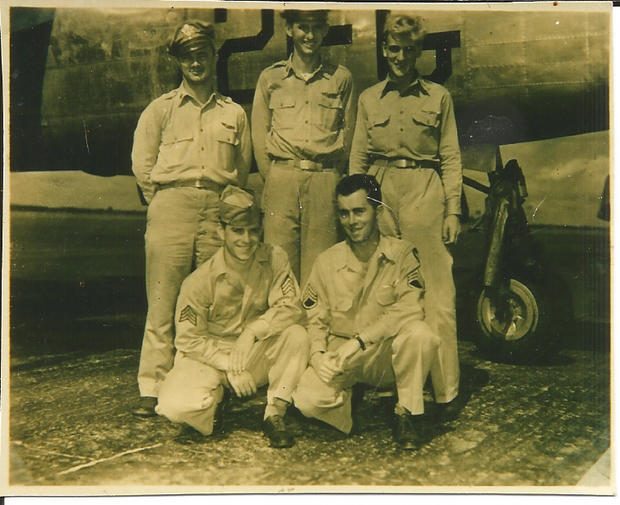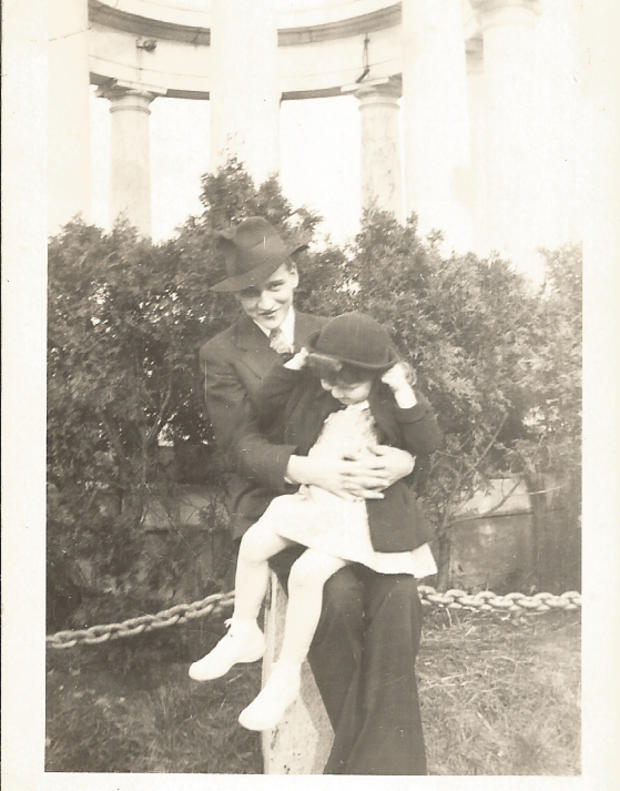Inside one woman's decades-long fight to bring fallen brother home
These days, Mary Margaret "Mickey" Beard only has to drive a few hours to visit her brother's grave at Arlington National Cemetery, a short distance given the lengths she went to for nearly 50 years to have him buried there.
Beard's brother, U.S. Army Air Corps Staff Sergeant George Louis Winkler, known as "Rip" to family and friends, disappeared after his plane crashed into a swamp on the Philippines island of Cebu on April 3, 1945. He was in his early twenties and the father to a child he never got the chance to know.
"He was just short of his 24th birthday, he shipped out three weeks before his son was born, never saw him, and it was just terrible," Beard told CBS News. "But he wanted to go for his country."
After he went missing, Beard, then 10 years old, asked her mother to take her around to hospitals, thinking maybe Rip had hit his head but would recognize his family when he saw them. Those hopes were dashed on December 15, 1949, when the remains of Rip Winkler and four other airmen who died in the crash with him were buried in a common grave in Jefferson Barrack National Cemetery in St. Louis, Missouri.
"There were a lot of you know hurdles to go through or jump over and it was ---Mother didn't deal with it well at all," Beard told CBS News. "When they notified her that there was going to be a burial in St. Louis, all the people that wanted to attend -- it was a group burial, but they had to pay their own way. And Mother had no money to go, we lived in West Virginia and this was you know, St. Louis, Missouri. And so she didn't go and it was just a sad time."
Bringing him home became a consuming passion for Beard. She vowed to research how the Army had handled her brother's death and began making inquiries.
"I found people along the way that really wanted to help, and I found others that just wanted the case closed because then it was starting to open up and we found that they requested dental records in 1951; he was killed in '45."
In her quest to discover why Rip's dental requests had been requested in 1951, she discovered that two years after Rip's burial, some Filipino natives found additional remains at the Cebu Island crash site. The Filipinos notified the U.S. Consulate who in turn contacted the U.S. Air Force. A second search mission resulted in the recovery of additional remains.
The family was never notified about the additional remains, a conscious decision on behalf of the Army. According to an intraoffice document signed by Colonel Edward M. Brown, the remains discovered in 1951 were from the crash that killed Rip Winkler and his crew, but it's the note at the bottom that was of particular interest to Mickey. Above the signature line, there was a personal recommendation from Colonel Brown that reads as follows, "In the opinion of the undersigned visits to next of kin concerned is unnecessary."
Incensed and driven to dig deeper, Mickey discovered something else. Declassified documents showed that the remains found in 1951 had been examined by the Anthropology Department at the University of California at Berkeley. In a 1953 report, anthropologists stated, "Identifications could be made for each airmen by their jawbone and could have been done earlier."
Instead, the additional remains were taken to St. Louis and buried alongside the group burial site in Jefferson Barrack National Cemetery without any of the five soldiers' families being the wiser.
On discovering this, Mickey pushed to exhume the common grave and identify the remains of all five of the men buried there. It proved a greater struggle than she had imagined working with the agencies tasked with recovering America's war dead.
"I was told that when I kept pushing that they had thousands of cases to deal with and they said you have only one. Well, to me that was my one," Beard said. "I think they really wanted me just to go away because I kept writing and phoning everyone and emailing everyone and I just kept pushing. The longer it went on, the more I had to do. And I was determined I was going to do it, this is my brother. And he deserves to come home."
She finally convinced the Department of Army Casualty and Mortuary Affairs to disinter all the remains buried in the common grave. In 2010, all five airmen were identified. Rip was finally going home.
"He was great fun," Mickey reminisced. "He taught me to dance, I put my feet on top of his and we'd dance, I turned the music on at my grandmother's house, our grandmother, and you know we'd dance around. And he was a lifeguard at one of the pools and I'd go down and take me down to the water and he was just always there. You know, he was always there to help."
Winkler was buried with honors at Arlington National Cemetery in 2011.
"It's everything. I just wish Mother... If it was done how it should have been done in 1951, she would have been a part of his funeral and everything, but she never knew."
Now, Beard tries to help other families struggling through the process of bringing their loved ones home.
"I think that once you get into all this, people need to show compassion. It's not just a job. You know, show some compassion for families that are going through this."



